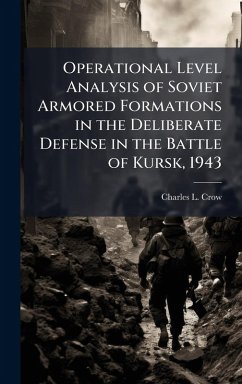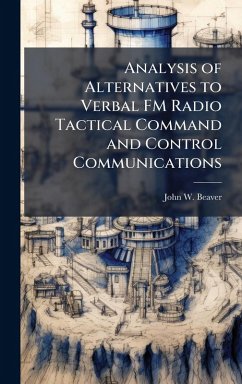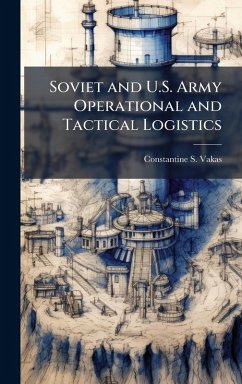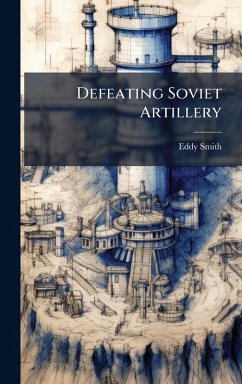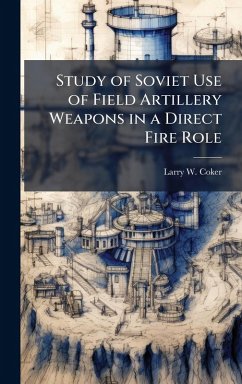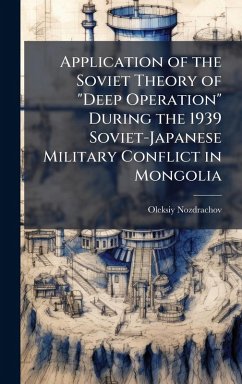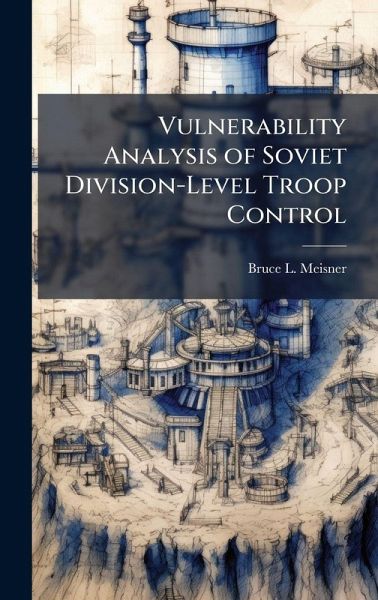
Vulnerability Analysis of Soviet Division-Level Troop Control
Versandkostenfrei!
Versandfertig in über 4 Wochen
28,99 €
inkl. MwSt.
Weitere Ausgaben:

PAYBACK Punkte
14 °P sammeln!
This study describes the Soviet troop control system in the motorized rifle division and analyzes it to determine its potential vulnerabilities. The study begins with a review of the evolution of the Soviet troop control system at the division level during and since World War II, followed by a brief analysis of what the Soviets call their "scientific basis" for tactical planning. Several specific aspects of the current division troop control system are then analyzed: (1) Decisionmaking and Planning Process. (2) Role of the Division Staff, (3) Division C2 Facilities/CPs, and (4) Impact of Cyber...
This study describes the Soviet troop control system in the motorized rifle division and analyzes it to determine its potential vulnerabilities. The study begins with a review of the evolution of the Soviet troop control system at the division level during and since World War II, followed by a brief analysis of what the Soviets call their "scientific basis" for tactical planning. Several specific aspects of the current division troop control system are then analyzed: (1) Decisionmaking and Planning Process. (2) Role of the Division Staff, (3) Division C2 Facilities/CPs, and (4) Impact of Cybernetics and Automation. The study concludes with an analysis of the vulnerabilities/means of exploitation of the Soviet division troop control system. One of the key findings from the historical analysis was that inadequate intelligence was the most frequent cause of disruption to Soviet forces at the division level during World War II. This may well be the main reason why the Soviet division decision cycle is so heavily dependent upon an accurate assessment of the battlefield. We can expect the Soviets to continue to move toward greater centralization and automation of division troop control. Computer automation will increasingly be applied to Soviet troop control activities and assist in the decisionmaking process. U.S. planners should maximize their efforts to identify those critical events and thus allow commanders to bring to bear the means to disrupt the Soviet troop control process at these critical times. This work has been selected by scholars as being culturally important, and is part of the knowledge base of civilization as we know it. This work was reproduced from the original artifact, and remains as true to the original work as possible. Therefore, you will see the original copyright references, library stamps (as most of these works have been housed in our most important libraries around the world), and other notations in the work. This work is in the public domain in the United States of America, and possibly other nations. Within the United States, you may freely copy and distribute this work, as no entity (individual or corporate) has a copyright on the body of the work. As a reproduction of a historical artifact, this work may contain missing or blurred pages, poor pictures, errant marks, etc. Scholars believe, and we concur, that this work is important enough to be preserved, reproduced, and made generally available to the public. We appreciate your support of the preservation process, and thank you for being an important part of keeping this knowledge alive and relevant.



